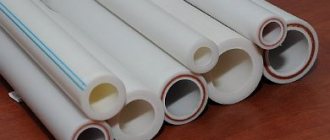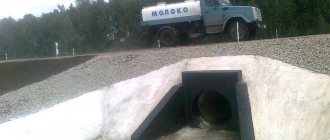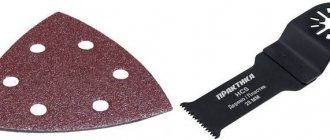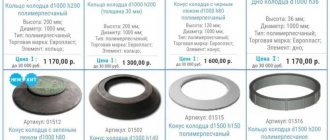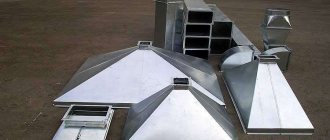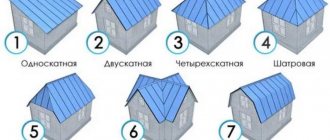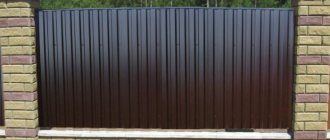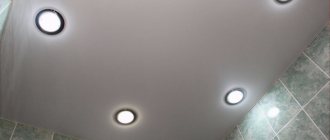Surely, many of those who read this article at least once in their lives have heard that there are electric and gas welding. But hardly everyone understands what the difference is. So let's figure it out.
So, electric welding is a process of joining metals, in which the joined sections of the material are melted and then bonded together under the influence of an electric arc (which is why this type of welding is called electric arc welding). This welding is carried out using a special electrode that melts (the so-called consumable electrode) or simply heats the surface.
Such welding can be carried out using two types of current: alternating and direct, but to use alternating current, you need to purchase a welding transformer that produces the powerful current necessary to stabilize the arc. When welding with a transformer, a rectifier unit is attached to it.
Unlike electric arc welding, gas welding occurs due to the flow of a stream of combustion gas from a torch or cutter. For this type of welding, two cylinders with different gases are connected to the torch: the gas that will burn (this can be butane, propane or methane) and the oxidizer (oxygen). If you use acetylene gas as fuel to operate the burner, then the need for an oxidizer disappears.
Both welding methods have their pros and cons. Electric arc welding is easier to use with good electrical supplies that can handle the enormous starting and operating voltages of the welding machine. Due to the absence of large gas cylinders, when using electric welding, there is no need to constantly take them to gas stations, and in general, the machine for electric welding is much smaller than for gas welding. But, unfortunately, electric welding is not ideal and has its drawbacks. This type of welding is more dangerous, at least due to the risk of electric shock, so for safe work the welder must have a lot of experience and follow all safety rules.
In this article:
Thermal welding is used to connect:
- rail;
- pipes;
- grounding loops;
- metal surfacing;
- filling cracks.
Suitable for welding carbon steels and cast iron with a thickness of 10-15 cm. In a miniature version, cables and wires are fused using this method. The technology allows you to connect large cross-section metals in hard-to-reach places, saving time. But the seams are very rough and require sanding, so they are not suitable for the façade of products.
Most often, railway tracks are repaired using thermite welding. Connections are made in accordance with GOST R 57179-2016, and the joints are designated by the abbreviation “SSR” - “butt joint of rails”.
Routing
The production of the product itself is recorded on certain forms. The classic form for a manufacturing inventory is called a “technological map.”
It describes the work process. If a whole series of a product or mass production is being manufactured, then it will have to be described in sufficient detail, describing all the subtleties of the work.
The work card includes the material that is used to manufacture the product, the cooking methods used to attach the elements, the inverter used to cook, materials for additives, current conductors, gas or minerals used in cooking.
The sequence of connections, their size and other data are also recorded.
This form records the brand of electrical conductors, their size, feed speed, cooking speed, layering of the connection, preferred inverter settings, and the origin of the mineral.
Parts are prepared before work, they are cleaned of rust, dirt and grease. Solvents are used to remove grease from the surface. If there are obvious defects in the form of cracks in an element, it is not used in work.
After work, the welding connection is checked. There is another article on this topic, but we will describe the main methods of control.
Firstly, the master can see the presence of seam irregularities. Masters apply auxiliary control using additional devices (magnet, radiation or ultrasound).
Naturally, not every unevenness is classified as unsuitable. For certain jobs, a list is created with acceptable irregularities if this does not affect the final result of the product.
Control can be occupied by a master or an individual who understands this process. His data is entered into the forms, he is responsible for monitoring the process and the initial result.
Electric arc welding
Electric arc welding is one of the most common because it is suitable for joining most types of metals and is easy to implement. All subtypes of electric arc welding have a common principle - a current with reduced voltage (for the safety of the welder) and increased power (to melt the metal) is used.
Between the positive and negative ends connected to the current source, when touched, an electric arc is excited. If you keep a gap between the poles of 3-5 mm, the arc burns stably and produces a temperature of up to 5000º C. This is enough to melt the edges of the base metal. The method of protecting the weld pool and filling the joint is carried out in different ways, which is why electric arc resistance welding is divided into several varieties.
Manual arc welding (MMA, RDS)
In the international classification system it is designated as MMA - Manual Metal Arc. The most budget-friendly method of welding, since MMA machines are cheaper than others. Suitable for work in the garage, country house and for non-critical connections in production. An electric arc burns here between the product and the end of a consumable electrode placed in a holder.
The electrode consists of a metal rod and coating. The rod also melts from the temperature of the arc and the liquid metal is transferred to the product, filling the joint. The coating acts as protection for the liquid weld pool. The electrode coating melts, creating a gas cloud that prevents exposure to the external environment.
The welder manipulates the holder and electrode, setting the width, height of the weld and penetration depth. The electrode is constantly shortening, so it takes skill to learn how to keep the gap between the end of the electrode and the product within 3-5 mm.
After the joint cools, a slag crust forms on the surface. It is removed with a slag separator and the seam is inspected for defects. MMA welding is performed on alternating or direct current, for which transformers or inverters and rectifiers are used.
Using manual arc welding (MAW), you can connect:
To create a uniform seam, electrodes with a similar rod composition are used. Welding is possible in all spatial positions, but has low productivity. It is possible to weld sides up to 30 mm thick with deep cutting of edges.
Argon welding (TIG)
The international system prescribes TIG - Tungsten Inert Gas. In argon arc welding, an electric arc burns between the end of a tungsten electrode and the workpiece. The welder manipulates the torch. The tungsten electrode does not melt, so it is easier to maintain the gap. The weld pool is protected by supplying argon from the cylinder through the reducer to the burner. The gas starts half a second before welding begins and continues to blow for a couple of seconds after. This reliably isolates the molten metal from external influences.
Filler wire or filler rods are used to fill gaps and increase weld height. They must be made of the same alloy as the base metal. On tightly joined sides of 1.0-1.5 mm sheet steel, welding without an additive is possible if high mechanical loads are not placed on the product.
Due to the sharply sharpened tungsten needle, welding seams are narrow and neat, so they often do not require processing after application. The penetration thickness depends on the current strength. The most powerful machines for argon welding produce 400 A, which is enough to weld parts 30 mm thick. In this case, water-cooled burners are used. When welding thin steels up to 5 mm, air-cooled machines are suitable.
Argon welding is used to connect:
Argon-arc welding provides high quality penetration and is universal for the materials being welded. Possible on alternating or direct current, the seams do not need to be cleaned, but TIG welding machines are more expensive than those for MMA.
Semi-automatic welding (MIG/MAG)
Semi-automatic welding has two designations in the international system. MIG means protection of the weld pool with inert gas (Manual Inert Gas), and MAG means protection with active gas (Manual Active Gas). Inert gases include argon and helium, and active gases include carbon dioxide. Welding with a mixture of argon 80% and carbon dioxide 20% is possible.
When welding semi-automatically, the arc burns between the end of the wire and the product. The wire is fed through the torch. A feed mechanism with rollers (most often a pusher, although sometimes a puller), a drum, and a reel are used. It is possible to install a cassette weighing 1-15 kg, which depends on the capacity of the semi-automatic compartment.
The wire simultaneously acts as a filler material. Since it is supplied automatically, the welder only has to control the torch, setting the width and height of the seam. The device has adjustable current and wire feed speed. Welding is carried out with direct current, but there are AC/DC models.
Semi-automatic machines can be monoblock and with a separate design of the current source and the feeding mechanism. There are liquid and water cooled equipment. The maximum current strength is up to 500 A. Thanks to semi-automatic welding, the seams are high-quality, neat, do not require cleaning, and the execution speed is high. When installing the appropriate wire, MIG welding connects:
There is a type of semi-automatic welding without gas. Then the weld pool is protected by gas from the powder located in the hollow part of the wire. Flux-cored wire allows you to join metals without using a bulky container, making it easier to transport. But the quality of flux-cored wire welds is significantly inferior to welding in a gas environment, therefore it is only suitable for non-critical products or for use in field conditions, hard-to-reach places.
Submerged arc welding
The standards for flux-cored welding are specified in GOST 8713-79. The arc in submerged arc welding burns between the end of the wire and the workpiece. The wire serves as an electrode and filler material, fed automatically from the drum. A hopper moves in front of the welding head, from which flux is supplied.
Flux is a granular substance used to protect the weld pool. It melts and releases a gas that repels air. The arc burns in a layer of powder, so sparks practically do not break out to the surface, and minimal metal spattering is ensured. There are models that have a suction nozzle after the welding head. It removes flux from an already applied seam, thereby saving consumables and cleaning the surface. Fluxes vary in composition (high-silicon, low-silicon, silicon-free), which determines their suitability for welding specific metals.
Submerged arc welding can be automatic or semi-automatic. The welding actuator (carriage) moves around the product using rollers and a chain. The current source is located nearby in a stationary place and is connected to the carriage by cables. The technology is used for connecting large-diameter pipes and laying pipelines.
Basic methods
Soldering by mechanical action is a method of joining elements without the use of heat or radiation of heat.
The main mechanism of work is the use of physical force. This type can be classified as cold-type cooking, ultrasound or joining elements by friction.
There is also a distribution of classification of cooking methods according to the difference in technical data. Using this classification, we can briefly talk about all types of cooking. They are divided into:
- Connection with the protection area (inactive gas, active gas, rarefied gas state can be used, protection can be combined and several elements can be used simultaneously).
- Soldering with and without stopping.
- A connection that is made manually; performed using human-controlled mechanisms; combined, where a machine and a person work; where all processes are controlled by the device; where work is performed and equipment is configured.
If you've never used a welder before and this information is confusing and confusing, don't worry. Let's remember the most commonly used cooking methods, which are used for work at home and in production.
We will give a description of commonly used cooking methods and the subtleties of their implementation that you need to pay attention to.
Remember, we described many welding methods in previous publications, which can be found by going to the “Types and Methods of Welding” section on the website.
Gas flame welding
It is carried out using a flame from a burner. To create a flame, acetylene or propane (as a flammable gas) and oxygen (to increase the power of the flame) are used. The temperature of the torch reaches 2800-3100º C, which allows the edges of the metal to melt. To fill the weld pool, filler wire is used, fed with the welder’s free hand.
Gas welding is most often used to connect ferrous metals, pipes, and patch containers. Energy independence allows welding to be used in field conditions, on roofs, in tunnels, and basements. Connection to the cylinders is made through reducers with pressure gauges. The oxygen reducer has two pressure gauges - high and low pressure. Additional components will be required (hoses, mouthpieces, nipples) to connect everything into one system.
Burner working part and nozzle diameter:
Manual soldering with arc and non-consumable electric conductor
The method of soldering with an arc and a non-consumable electrical conductor of various materials is often used by craftsmen working at home, but also by experienced welders.
Welding with an arc, when working with your hands, is the oldest type of electric welding. A wide range of arc welding inverters is available to most craftsmen.
An electrical conductor is the basis for the supply of current. It is made from a variety of materials and can be coated with a special coating.
The peculiarity of soldering with an arc and a non-consumable current conductor is simple: the elements are connected to each other, then the current conductor is tapped on a metal surface, igniting the arc for welding. Inverters for welding are the main equipment.
Electroslag welding
The essence of electroslag welding is to connect two sides of the metal using the heat generated by the slag pool. To do this, the joining area is filled with conductive flux. A welding electrode (wire) is connected to it, which heats the flux, forming liquid slag. The electrode continues to conduct current while immersed in the welding slag pool. Arcless method. The temperature rises and the edges of the metal melt together.
The thickness range of metals welded using this method is 20-3000 mm. Slag welding can be used to connect:
Technology is used in the chemical industry, mechanical engineering, shipbuilding, and the aviation industry.
Manual welding using an arc and a consumable current conductor
Soldering methods end not only with working with consumable electrodes. When working, melting conductors of electric current are also applicable.
The method of welding elements using a consumable electrode is the same as working with non-consumable elements.
They differ only in the composition of the current conductor itself: consumable electrodes are made from materials that can easily melt.
Such electrodes are also suitable for welding machines at home. In this case, the connection occurs not only due to the melting of the metal element, but also due to the melting of the current conductor.
Plasma welding
Plasma is used to melt the edges and filler metal. The equipment consists of a direct current source, an argon gas cylinder, and a plasma torch. To remove excess heat from the plasma torch nozzle (torch), water cooling is often provided.
The gas is supplied to the plasmatron and heated by an electric arc. Thanks to this, it increases in volume up to 100 times. Due to thermal expansion, it begins to flow out of the nozzle at high speed. This is plasma. Its temperature is 30,000º C, which exceeds the characteristics of other welding methods.
There are two options for implementing the technology:
Using plasma welding, metals up to 9 mm thick are connected in all spatial positions. The method is suitable for welding:
Introduction
Why is welding needed? What is it based on? Such questions come to many newcomers to this business. Basically, soldering is a method of joining metal parts.
The joint (also called a seam) is formed at the atomic level by increasing the temperature of the parts as well as external changes.
The construction of the connection of metal parts is broad and all the information, including additional subtleties, will not fit in one article.
One article also cannot contain all the information about the types of cooking, because there are more than a hundred of them. But we will try to briefly describe the properties and types of cooking, so as not to confuse inexperienced masters.
In modern times, thermal, mechanical, elevated temperature and completely mechanical welding of metal parts or other elements (plastic and glass) is used.
When choosing a cooking method, take into account all the details: the sturdiness of the metal, its content, methods of application, and more. This affects the method used for cooking.
Rising boiling is the procedure of joining elements using elevated degrees of temperature. This results in melting of the material and tight adhesion.
Soldering with an increase in temperature includes welding with an electric discharge of high power and gas (we will discuss this later).
Mechanical joining with increasing temperature is the procedure of joining elements using high temperature and techniques, for example, pressure. This includes connection welding.
The element does not get particularly hot, as when connecting with temperature, and the connection is made using pressure rather than melting the element.
Is it better to cook with a semi-automatic or electrode?
The better and easier it is to weld with semi-automatic welding or electrodes
Semi-automatic welding and welding with a coated stick electrode have a lot of differences. At the same time, it would be wrong to say which welding is better, because, in fact, these are two different technologies, but they have the same goal.
At the same time, the choice towards semi-automatic welding or electrode welding largely depends on the requirements for the quality of the weld, as well as the loads that will be placed on it during operation. In this article we will look at what is better to weld, electrode or semi-automatic welding.
Which method should I choose?
When choosing a welding method, the type of material must be taken into account.
The choice of welding method depends on the following indicators:
- the material from which the structure will be created;
- parameters of the parts used and created and the structure itself;
- conditions under which all work will be carried out.
High-performance welding methods are distinguished by the fact that the structure and connections obtained as a result of the work have 100% strength.
Today, there are such main types of welding as mechanical, thermal and thermomechanical, which, in turn, have subtypes, distinctive features and advantages.
Classification of welding technologies
All types of welding work, depending on the type of energy used to form interatomic compounds, are divided into three categories:
- Mechanical : cold, ultrasonic, explosion, friction, others. Pressure and mechanical energy are applied.
- Thermal : laser, arc, plasma, electroslag, gas, electron beam, others. Thermal energy is used.
- Thermomechanical : contact, diffusion, others. Pressure and thermal energy are applied.
Mechanical class
When using a mechanical class, only mechanical energy and pressure are used. Common options include:
- explosion;
- ultrasonic influence;
- friction;
- cold method and more.
Distributed in all industries due to its simplicity and accessibility.
Explosion welding
Convenient for joining different metals. It is also used for cladding purposes. Such technology is often unknown even to high-level professionals. When performed on surfaces, a directed explosion is carried out. As a result, fusion occurs.
Cold welding
The connection is made under strong pressure without heating. Bonding is carried out due to the occurring plastic deformation. No special training or equipment is required. Often used in plumbing work and by car enthusiasts.
Ultrasonic welding
Ultrasonic vibrations are used during exposure. A few units of Newton are enough for compression. It is equally used in radio electronics or when working with thick-walled products. The operating principle is determined by GOST 2601, SEV 5277. In addition to metals, materials such as leather, fabrics, plastics and others can be combined in this way.
Friction welding
Based on the use of strong pressure. The connected elements are firmly fixed. One remains mobile and, through friction, heats up to a state of plasticity. The strength of the seam is formed due to the destruction of oxides and fatty films that can interfere with the level of strength of the resulting seam.
Advantages and disadvantages
For ease of equipment evaluation, the main operational characteristics of semi-automatic devices and inverters are summarized in a table.
| View | pros | Cons according to experts |
| Inverter | low price; ease of use; small dimensions, weight - inverters are easy to transport; quick preparation; simple and clear setup; many models of different power; there are additional functions. | expensive repairs, you need to contact service centers; electronic filling is afraid of high humidity and dust; standard set of wires up to 2.5 meters, limits distance from the power grid; Unstable operation at low temperatures. |
| Semi-automatic | high quality of welded joints; the ability to perform complex work that requires a protective atmosphere; stability of the suture roller; high efficiency; welds any metals. | restrictions on dimensions, it is necessary to transport gas equipment and cylinders together with the device; the job requires skills; high price. |
